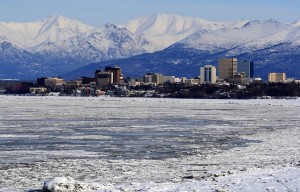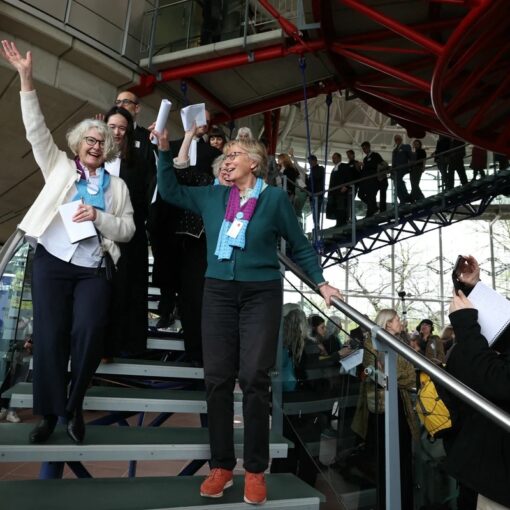By Ellii Cho, Summer Legal Intern
 The National Environmental Policy Act of 1970 (NEPA) requires federal agencies to prepare environmental impact statements (EISs) for all “major Federal actions significantly affecting the quality of the human environment.”[1] This includes the issuance of federal permits. Even after an EIS is completed and a proposed project has been implemented, the acting agency may need to further prepare a supplemental environmental impact statement (SEIS) if there are substantial changes to the proposed project or if there is significant new information relevant to environmental concerns.
The National Environmental Policy Act of 1970 (NEPA) requires federal agencies to prepare environmental impact statements (EISs) for all “major Federal actions significantly affecting the quality of the human environment.”[1] This includes the issuance of federal permits. Even after an EIS is completed and a proposed project has been implemented, the acting agency may need to further prepare a supplemental environmental impact statement (SEIS) if there are substantial changes to the proposed project or if there is significant new information relevant to environmental concerns.
The U.S. District Court for the District of Alaska recently encountered an important emerging question: whether EISs should look at how changes in the environment might affect a proposed project in addition to the usual course of evaluating the potential effects the project might have on the environment. In Kunaknana v. U.S. Army Corps of Engineers,[2] decided on May 27, 2014, plaintiffs challenged the Corps’ issuance of a section 404 permit of the Clean Water Act allowing an oil company’s drilling activity. The dispute stems from the Corps’ reliance on a 2004 EIS in considering the oil company’s permit application submitted five years later in 2009. Plaintiffs claimed that the Corps failed to consider and examine post-2004 information concerning climate change that could affect the proposed project, and that it did so without providing a reasoned explanation. Specifically, plaintiffs contended that scientific research and understanding of climate impacts on the drilling project since 2004 constituted significant new information concerning environmental impacts and thus, necessitated an SEIS. These climate impacts included, among others, a shorter ice road season, the result of which would be significant disruptions in the transportation of oil.
Although the District Court did not directly answer the question of whether an SEIS was necessary in evaluating changes in the environment due to climate change and its effects on the project, it nevertheless held that “the Corps’ determination that [an SEIS] was unnecessary was arbitrary and capricious.”[3] The court also ordered further briefing from the parties in order to determine whether, and to what extent, the Corps should evaluate post-2004 climate change information. Kunaknana is important because it demonstrates a federal court’s willingness to consider emerging scientific understanding of the impacts of climate change on proposed projects in NEPA analyses and governmental decision-making. This reflects the emerging trend of incorporating into EISs an analysis of the effects of climate change on projects. Professor Michael Gerrard has articulated the trend and coined the phrase “reverse environmental impact analysis” here. The Council on Environmental Quality, created by NEPA, is also in the process of finalizing the 2010 Draft NEPA Guidance on Consideration of the Effects of Climate Change and Greenhouse Gas Emissions, which provides some guidelines for assessing reverse environmental impacts in NEPA analyses.
The Kunaknana court also offered an interesting aside in regard to standing and climate change impacts. The defendant oil company had asserted that Kunaknana lacked Article III standing. It relied on Wildearth Guardians v. Salazar[4] in which plaintiffs asserted that greenhouse gas emissions from the coal mining on federal lands allowed by defendant would negatively impact their recreational, aesthetic, and economic interests in the property. The Wildearth court concluded that plaintiffs lacked standing because the causal link between the plaintiffs’ localized property interests and the diffuse and unpredictable effects of greenhouse gas emissions was too attenuated. In a footnote, the Kunaknana court rejected the defendant’s argument and found that unlike in Wildearth, the Kunaknana plaintiffs had standing to pursue their climate change claim. The court distinguished the injury asserted in Wildearth from this case and maintained that Kunaknana’s assertion that the Corps failed to engage in a reverse environmental impact analysis concerning new climate change knowledge constituted a particularized injury. This suggests that future plaintiffs seeking reverse environmental impact analyses under NEPA are likely to satisfy the injury requirement under Article III standing.
[1] 42 U.S.C. § 4332(C).
[2] Kunaknana v. U.S. Army Corps Engineers, 2014 WL 2207707 (D. Alaska, May 27, 2014).
[3] Id. at *20.
[4] Wildearth Guardians v. Salazar, 880 F.Supp.2d 77 (D.D.C. 2012).
image from: https://bit.ly/1rbL0vo



